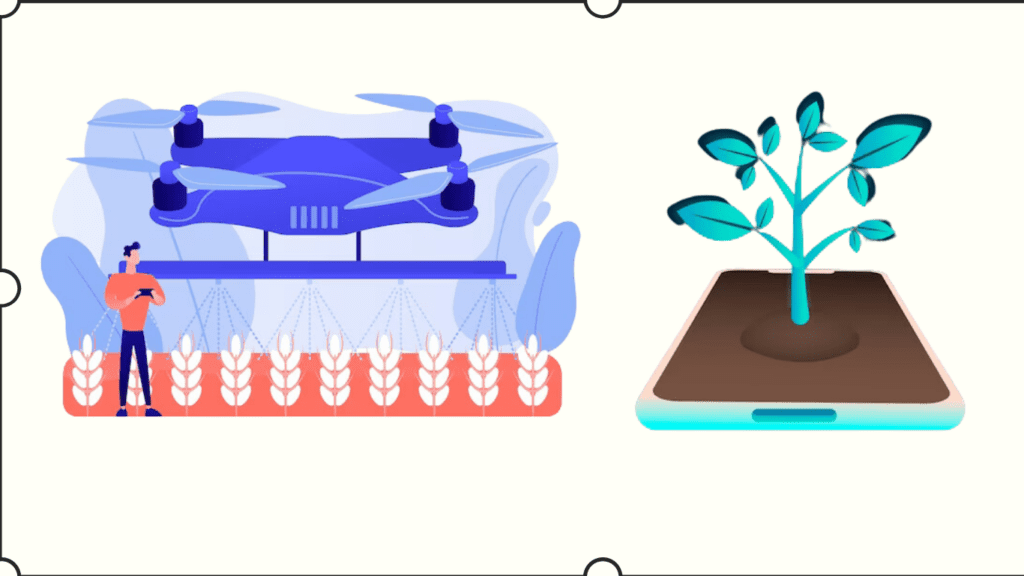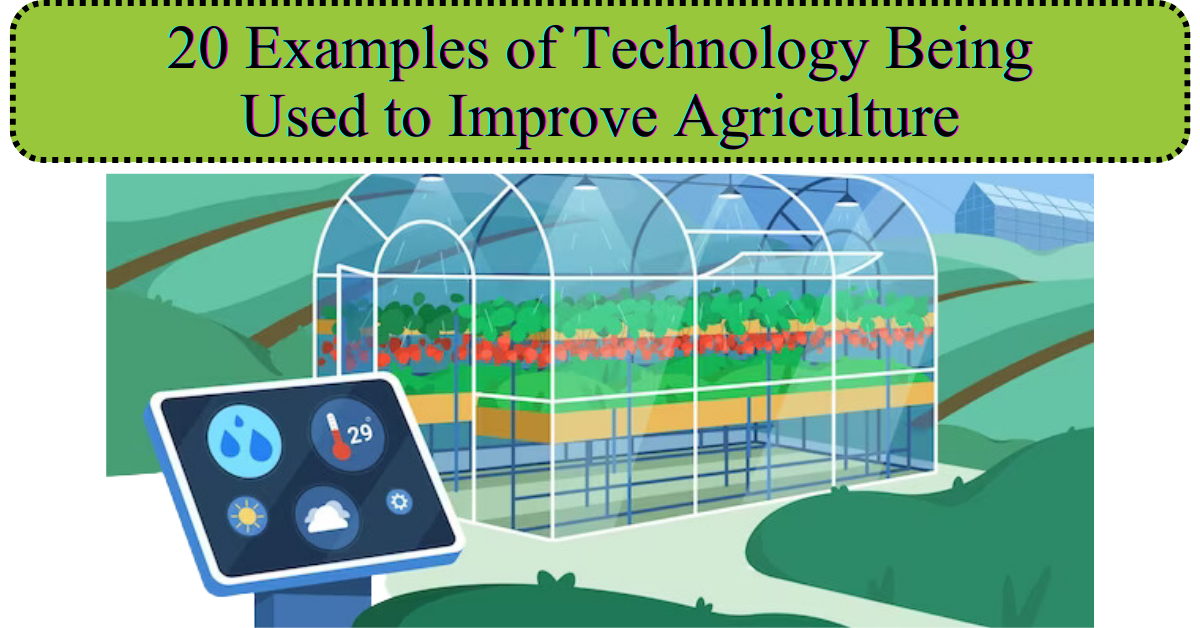In recent years, the agriculture industry has witnessed a remarkable transformation, with technology playing a pivotal role in its advancement. From precision farming to data-driven decision-making, innovative technologies have revolutionized the way we cultivate crops and raise livestock. In this article, we will explore 20 inspiring examples of how technology is being used to enhance agricultural practices and boost productivity.
Some methods to improve agriculture fields
Examples of technology being used in agriculture are given below,
1. Drones in Crop Monitoring
Drones equipped with high-resolution cameras are used to monitor crop health, identify pests and diseases, and assess irrigation needs. This technology enables farmers to target specific areas and take timely action, reducing wastage and maximizing yields.
2. Satellite Imaging for Precision Agriculture
Satellite imagery and remote sensing tools provide farmers with real-time data on soil moisture, temperature, and vegetation, helping them make informed decisions about planting, fertilization, and harvesting.
3. IoT-enabled Smart Irrigation Systems
Internet of Things (IoT) devices are employed to monitor soil moisture levels and weather conditions. This data is then used to automate irrigation systems, conserve water and optimize crop growth.
4. Vertical Farming
Vertical farming utilizes controlled-environment agriculture, where crops are grown in stacked layers under artificial lighting. This approach maximizes space utilization and reduces the need for pesticides and herbicides.
5. Robotics for Harvesting
Robotic systems are being developed to autonomously harvest fruits and vegetables. These robots can work round the clock, increasing efficiency and reducing labor costs.
6. Blockchain in Supply Chain Management
Blockchain technology provides transparency and traceability in the agricultural supply chain, ensuring the authenticity and quality of products.
7. AI-driven Crop Predictions
Artificial Intelligence algorithms analyze historical data, weather patterns, and other variables to predict crop yields accurately. This assists farmers in planning and optimizing their production processes.
8. Automated Weather Stations
Automated weather stations placed throughout the farm provide real-time weather updates, helping farmers make informed decisions about planting and harvesting schedules.
9. Soil Health Monitoring Sensors
Sensors placed in the soil measure pH levels, nutrient content, and moisture, helping farmers implement targeted soil management practices.
10. Biotechnology and Genetic Engineering
Advancements in biotechnology enable the development of genetically modified crops with improved resistance to pests, diseases, and adverse weather conditions.
11. Aquaponics Systems
Aquaponics combines fish farming (aquaculture) with hydroponic plant cultivation, creating a symbiotic ecosystem where fish waste provides nutrients for the plants, while the plants purify the water for the fish.
12. Autonomous Tractors and Farm Equipment
Autonomous tractors and machinery equipped with GPS and sensors can perform various tasks without human intervention, enhancing efficiency and reducing labor requirements.
13. Smart Livestock Monitoring
IoT devices are used to monitor livestock health and behavior, enabling early detection of illnesses and optimizing breeding programs.
14. Satellite-guided Planting
Satellite guidance systems on planting equipment ensure precise seed placement, leading to improved crop uniformity and reduced seed wastage.
15. Predictive Analytics for Pest Control
Data analytics and machine learning are applied to predict pest outbreaks, helping farmers take preventive measures and reduce their reliance on chemical pesticides.
16. Mobile Apps for Farmer Education
Mobile applications offer farmers access to vital information on best practices, market prices, and weather forecasts, empowering them to make informed decisions.

17. Automated Feeding Systems
Automated feeding systems in livestock farming accurately dispense feed, minimizing waste, and ensuring animals receive proper nutrition.
18. Solar-Powered Farming Solutions
Solar energy is harnessed to power irrigation systems, lighting, and other farming operations, reducing reliance on fossil fuels and cutting down operational costs.
19. Water Purification Technologies
Advanced water purification technologies enable farmers to recycle and reuse water efficiently, promoting sustainable water management practices.
20. Smart Pest Traps
Smart traps equipped with sensors and cameras identify and monitor pest populations, aiding in targeted pest control strategies.
The integration of technology into agriculture has unlocked tremendous potential for increased productivity, sustainability, and profitability. As these innovations continue to evolve, farmers worldwide can look forward to a more prosperous and sustainable future for the agricultural industry. Embracing these technologies will undoubtedly play a pivotal role in addressing the challenges of feeding a growing global population while safeguarding our natural resources.

